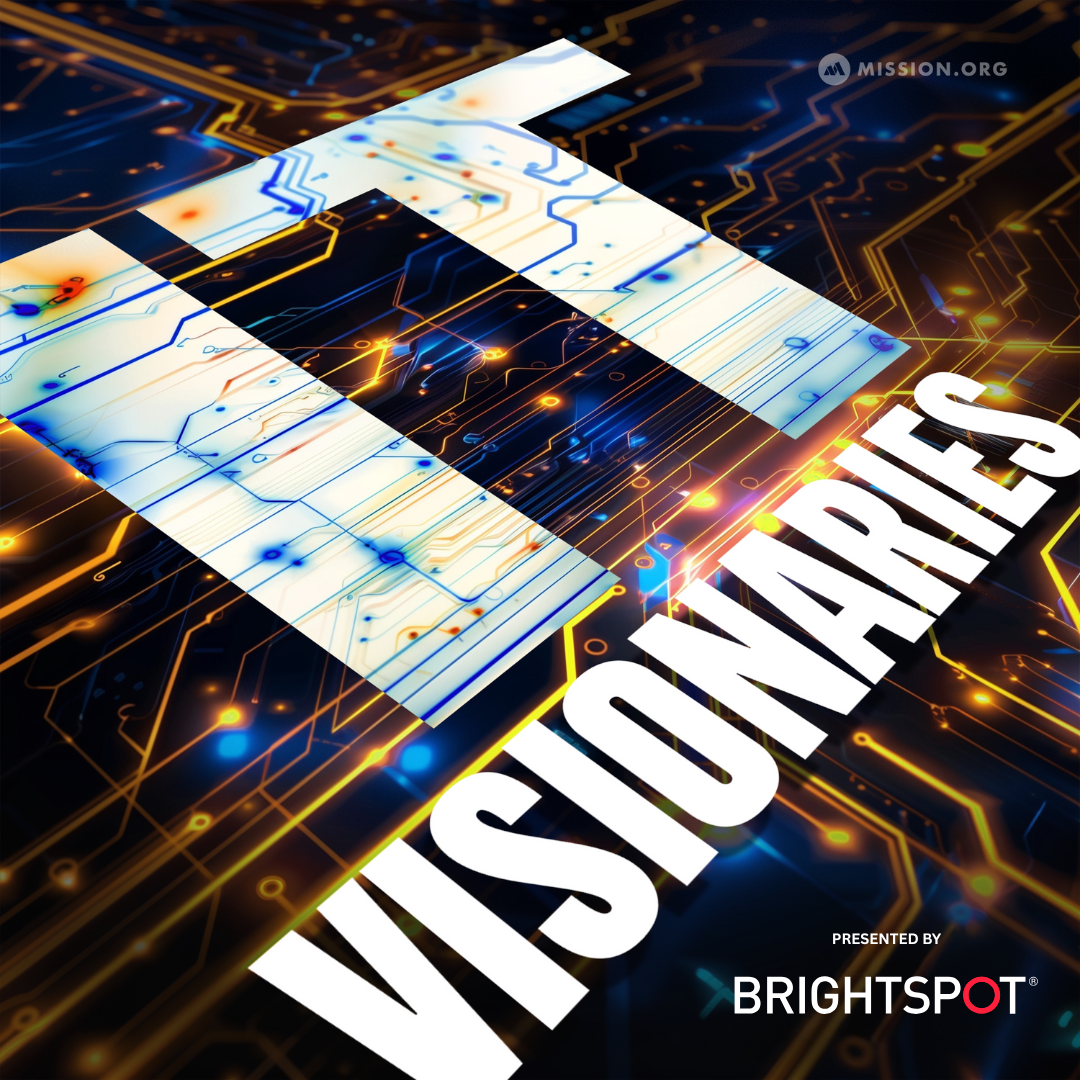Or listen in your favorite podcast app
Apple Podcasts / Google Podcasts / Stitcher
Rachana Kumar is currently the Senior Director Of Engineering at Etsy, the e-commerce platform made for unique buyers, sellers and creatives. But Etsy isn’t like a normal e-commerce site with traditional vendors and inventory, the tech behind the platform is just as unique as the people using it. Rachana explains it all on this episode of IT Visionaries. Plus, she dives into the importance of creating a diverse workforce and doing mission-driven work.
Best Advice: “You don’t have to be the person who is the most technical on the team. It’s not your job anymore, so learn to let go.”
Key Takeaways:
- How Etsy handles the billion-plus data points generated daily
- Using machine learning to improve customer experience
- What it means to be mission-driven
- Creating for mobile versus creating for desktop
Current role at Etsy
Rachana has been with Etsy for more than five years and currently oversees the mobile arm. She works on end-to-end platforms and infrastructures including building the ad products for both buyers and sellers. Rachana is also in charge of leading the engineering department of about 80 people.
Etsy is not the mom and pop company people think of. There are millions of sellers with tens of millions of listings that connect buyers and sellers and that equates to the generation of more than a billion data entry points per day that need to be managed. And this data is being generated from all over the world by people of all different backgrounds. That is one of the things that Rachana loves most about Etsy — the ability to connect with and help people of various cultures and backgrounds spread their work and connect to others.
“We are a marketplace for creative goods that connects buyers and sellers. But at the heart of it, at the core of it, we are also really a big data and machine learning company which makes the 60 million unique listings accessible to our 40 million-plus buyers. It’s a large process where we create over a billion data entries each day.”
“Giving artists the ability to have a global platform is so exciting.”
The tech at Etsy and how it’s improving the customer experience
Using machine learning to make connections happen is one of the biggest things that makes Etsy different. Machine learning is necessary because unlike most e-commerce companies, which control their own inventory or have clear categories to enter into the database, Etsy has handmade, unique items so there are no categories or clear database categories to sort data. Mission learning helps to do that massive job. The tech will have to learn the buying behaviors of customers and match that to inventory created and listed by sellers. Getting that right is key to providing a quality experience for each party.
In the five years that Rachana has been at Etsy, there have been a number of challenges. Scaling has been one of the biggest. Since Rachana started, the company has gone from having less than 100 engineers to a number in the triple digits. Additionally, moving into the cloud and building infrastructure to support the billion data entries has been a huge technical challenge that is still ongoing.
Working at a mission-driven company
After a few years of working as an engineer, Rachana wanted to switch gears and find work that had a deep impact. Etsy’s mission is to make commerce human. People in tech all want to change the world — they talk the talk but not everyone walks the walk. Etsy does by enabling small business owners to run their companies on the platform. Women, single-owners and creative entrepreneurs have found a platform and environment to have a career in the way they want.
One of the challenges of running an e-commerce company is the carbon footprint because of the mass amounts of shipping. Etsy was one of the first companies to offset those carbon emissions. In the office, they consider those factors and make decisions that will be beneficial for the planet and the company.
“From all angles, intrinsically our business enables small business owners to run their businesses online. We give them a platform for that.”
“The impact we have on the customers and the world at large is something we actively think about.”
Diversity at Etsy
At Etsy, there is a major focus on diversity. The majority of both buyers and sellers are women, so it’s important to have a culture and workforce that reflects the people who use the site. The proof of that is in the numbers — 56% of the Etsy employees are women and 33% of the engineering team is women (double the industry average). Additionally, 50% of the board is women. But regardless of how much Etsy has done in this area, Rachana says there is still a lot of work to do. To keep moving the ball forward, Etsy recruits talent in many ways. There’s no straightforward way to recruit talent, Rachana says, because engineers don’t have to just come from the top engineering schools. Jobs are open to everyone from all kinds of programs and backgrounds. Rachana explains that you have to keep an open mind in where you source from. And she says that conferences and referrals are strong sources of available talent. But in order to maintain diversity, you have to actively look for diversity and partner with organizations that can help.
“We are proud to have a culture that values diversity and inclusion.”
Mobile versus desktop development
User behaviors are different between the app and the desktop. On the Etsy app, most of the users are buyers who make more high-value purchases. It’s different than desktop because it draws more habitual buyers. Knowing that, you can create a different, more personalized experience for the kind of user you are targeting. Rachana explains that first-time users come from social media — places like Pinterest and Instagram — so her team has to build for those potential new customers. The user mission needs to be understood. Sometimes it’s very clear and other times, you don’t quite know. Rachana says that you have to try to understand all users and figure out ways to make sure they keep coming back.
“We want to understand what are they looking for. Even if they don’t make a purchase instantly, how do we understand what they want so that we can sell to them in the future are we can give them recommendations and suggestions to what they’re looking for?”
Building the seller marketplace
Sellers don’t have large inventories, so Rachana says that the team has to try to make it as simple and seamless as possible for sellers to work through Etsy with the inventory that they have. And there are different challenges for the sellers depending on where they live. For example, writing a product description might be easier in America but a huge ask for someone across the world. Etsy tries to do a lot of education and they put material online to help sellers learn how to get the most out of the platform both from a technical standpoint and from person-to-person. In some markets, there are even in-person workshops and teams dedicated to seller growth.
“We’d like to use mission learning and automation for everything, but because we’re a human-centered organization, we try to do both.”
Mentors who have led the way
Rachana says that she has had many mentors throughout her career, but she’s never actually had a female boss, which she hopes to change. Learning, Rachana says, is not a singular activity and you can’t have one person you go to for everything. Instead, Rachana describes having a mentor network like having your own personal board of directors. Mentorship isn’t something you can really seek out either, Rachana says. You don’t typically walk up to a person and ask them to be your mentor. Rather, it should happen naturally and then you have to work to maintain those relationships.
The biggest thing she has learned, and one of the founding principles of work at Etsy, is the importance of bringing your authentic self to work. Even if your peer group doesn’t look like you, it’s okay to be who you are. If you’re good at your job, that’s all that matters.




